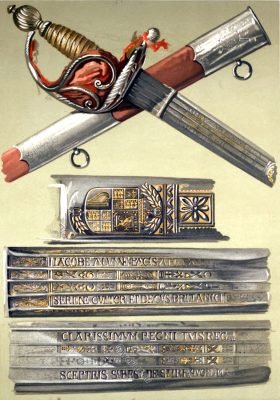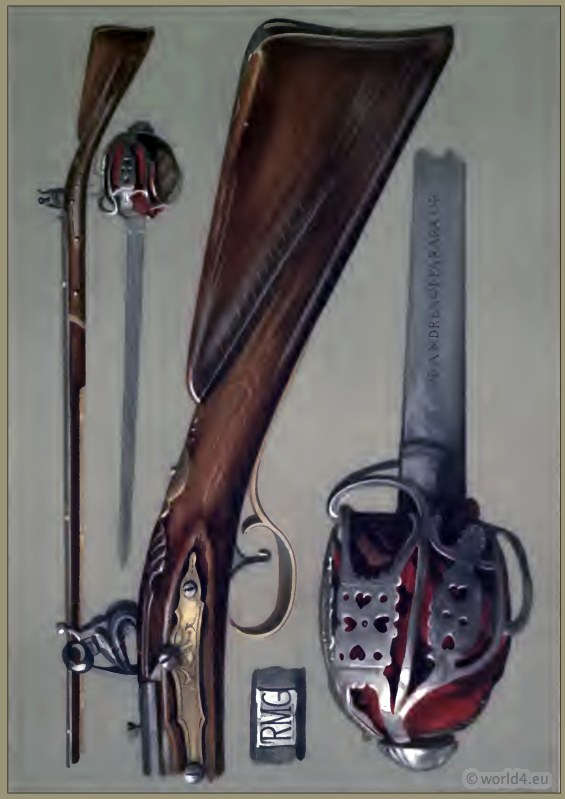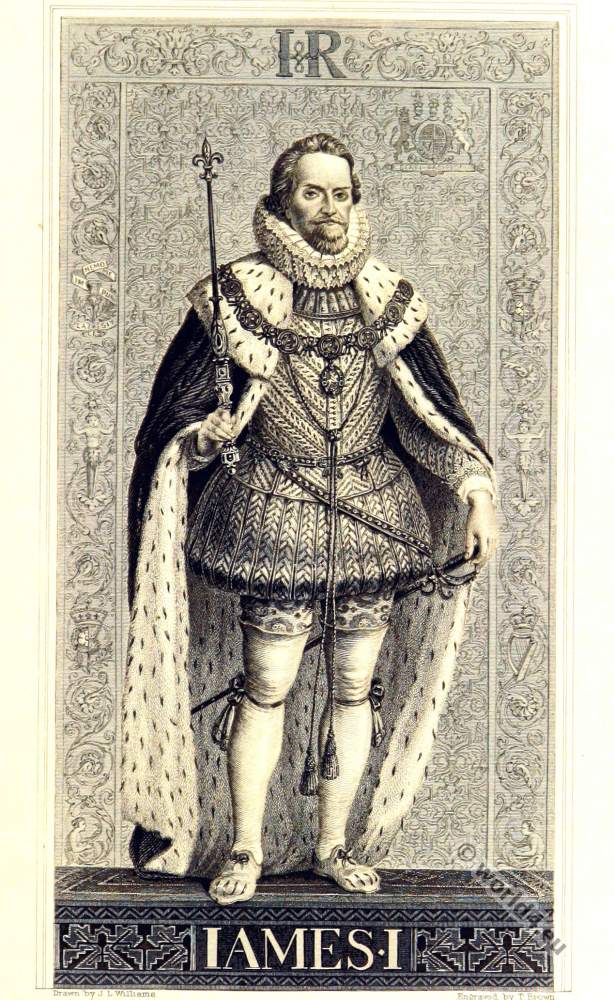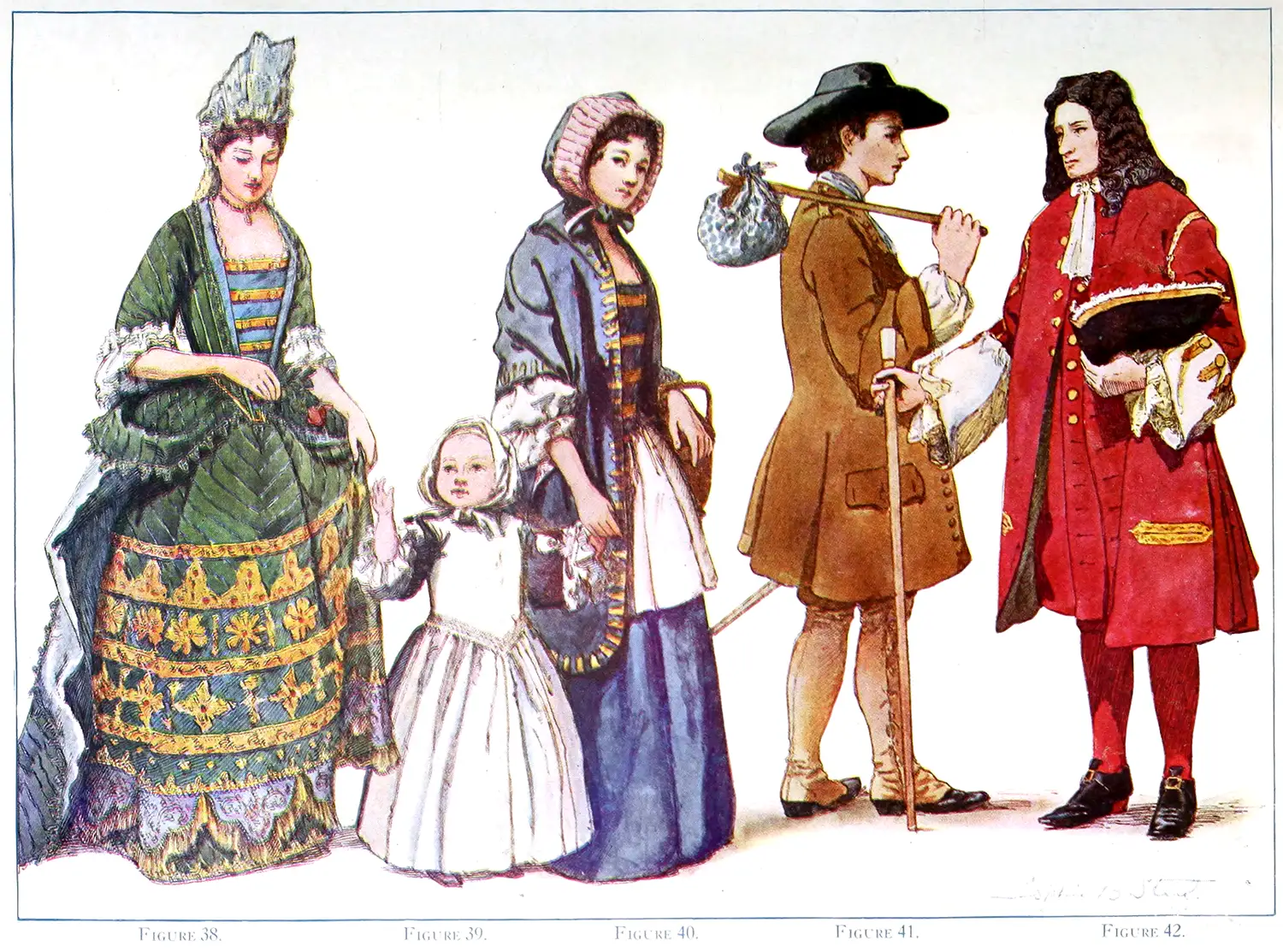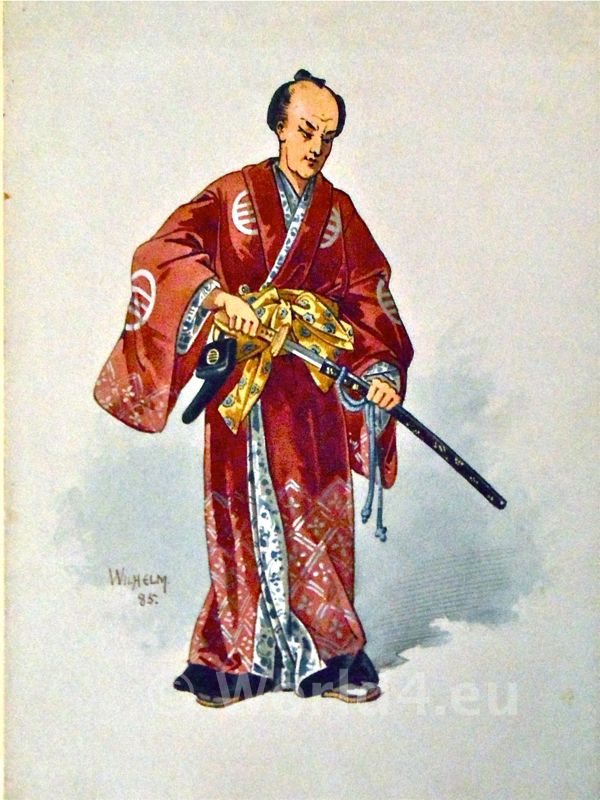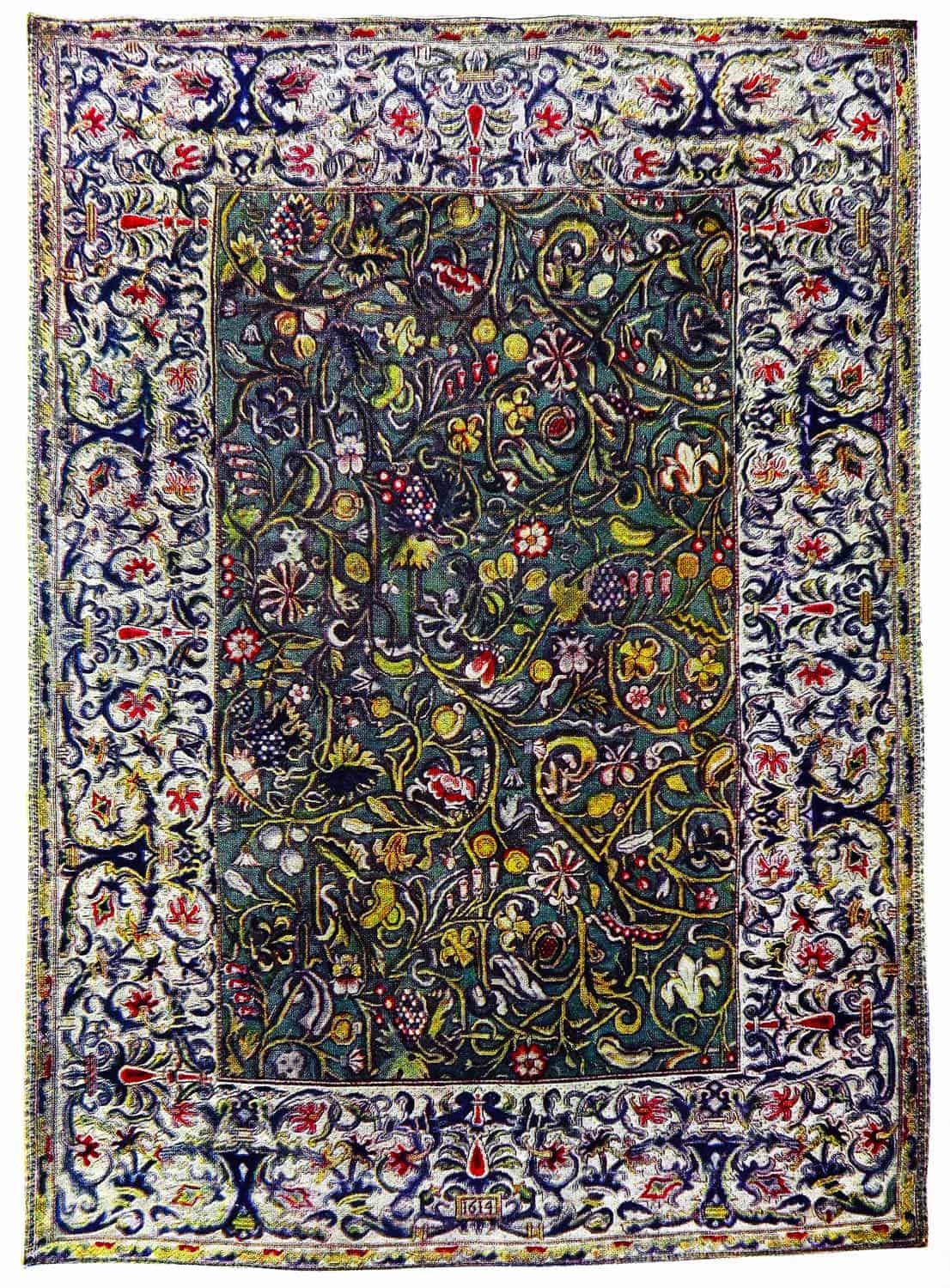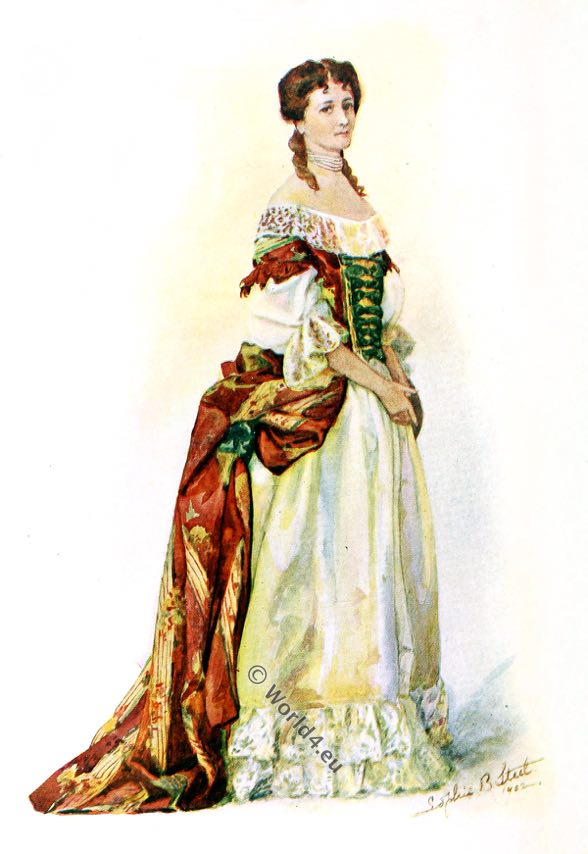The sword of James Graham, 1. Marquess of Montrose, given by Charles I.
MONTROSE’S SWORD
James Graham, 1st Marquess of Montrose (1612 – 1650) was a Scottish nobleman who fought for the royal side in the English Civil War from 1644 to 1650 in Scotland and was finally executed in Edinburgh on 21 May 1650.
“I’ll make thee glorious by my pen
And famous by my sword.” MONTROSE.
THIS gabion, which we venture to, consider as perhaps the most precious in Sir Walter’s collection, was given by Charles I to his faithful follower. Unfortunately no record of the gift, or of the occasion of it, can be found in the history of Montrose, Sir Walter himself tells us how the sword came into his possession, “I have moreover,” he writes, “a relic of a more heroic character; it is a sword which was given to the great Marquis of Montrose by Charles I, and appears to have belonged to his father, our gentle King Jamie.
It has been preserved for a long time at Gartmore, but the present proprietor was selling his library, or great part of it, and John Ballantyne the purchaser, wishing to oblige me, would not conclude a bargain which the gentleman’s necessity made him anxious about till he flung the sword into the scale. It is, independent of its other merits, a most beautiful blade. I think a Dialogue between the same sword and Rob Roy’s gun might be composed with good effect.”
This sword, fit emblem of the task undertaken by the “great Marquis” for his royal master, suggests to us many memories of the owner, that “mirror of chivalry” of whom a foreign contemporary 1) says that he was “the only man in the world who has ever realized to me the ideas of certain heroes whom we now discover nowhere but in the Lives of Plutarch,” and whom another contemporary-a countryman of his own-has thus affectionately described: “And it cannot be denyed but he was ane accomplished gentleman of many excellent partes, a bodie not tall, but comely, and well compossed in all his liniamentes; his complexion meerly white, with flaxin haire; of a stayed, graue, and solide looke, and yet eyes sparkling and full of lyfe: of speach slow, but wittie and full of sence; a presence graitfull’ courtly, and so· winneing upon the beholder, as it seemed to claim reuerence without seweing for it; for he was so affable, so courteous, so bening as seemed verely to scorn ostentation and the keeping of state, and therfor he quicklie made a conquesse of the heartes of all his followers, so as whan he list he could haue lead them in a chaine to haue followed him with chearefullnes in all his interpryses; and I am certainely perswaded that this his gratious, humane, and courteous fredome of behaviour being certanely acceptable befor God as well as men, was it that wanne him so much renovne, and inabled him chiefly, in the loue of his followers, to goe through so great interprysses wheirin his equall had failed, although they exceeded him farre in power, nor can any other reason be given for it but only this … .
“I thinke veralie he was naturally inclyned to humilitie, courtesie, gentlenes, and freedome of cariage. He did not seeme to affect state nor to claim reuerence, nor to keep a distance with gentlemen that ware not his domestickes; but rather in a noble yet courteouse way he seemed to slight those vanisheing smockes of greatnes, affecting rather the reall possession of men’s heartes than the frothie and outward showe of reuerence; and therefor was all reuerence thrust upon him, because all did loue him, therfor all did honour him and reuerence him, yea, haueing once acquired there heartes, they were readie not only to honour him, but to quarrell with any that would not honour; him; and would not spare their fortounes, nor derest blood about there heartes; to the- end he might be honoured because they saue that he tooke the right course to obtaine honour. He had fund furth the right way to be reuerenced, and thereby was approued that propheticke maxime which hath neuer failed, nor neuer shall faille, being pronounced by the Fountaine of truth.” (“He that humbleth himself shall be exalted.”) 2)
The sword bears on both sides the Royal Arms of Great Britain. The following inscription is also engraved on the blade –
JACOBE ALUMNE PACIS ATK PALLAE
SERENE CULTOR ET DECUS BRITANNICI
CLARISSIMUM REGNI TUIS REGALIB
SCEPTRIS SUREST DE STIRPE QUOND MARTIA.
The sword measures about 34 inches in length, the blade being 27 and the hilt 7 inches. The blade is straight and two-edged, beautifully ornamented; the hilt, open scroll work and silver gilt; the grip, bound with alternate chains of silver and flat bands of gold. The sheath was remounted by Sir Walter’s order in 1822.
In the drawing the sword is represented half real size, with inscription and arms full size.
1) Cardinal de Retz.
2) A short abridgement of Britane’s Distemper, etc., by Patrick Gordon of Ruthven, 1639-49, pp. 76-78. (Printed for the Spalding Club.)
Source: Abbotsford, the personal relics and antiquarian treasures of Sir Walter Scott. Illustrated by William Gibb – Maxwell-Scott, Mary Monica (Hon), 1852-1920.

